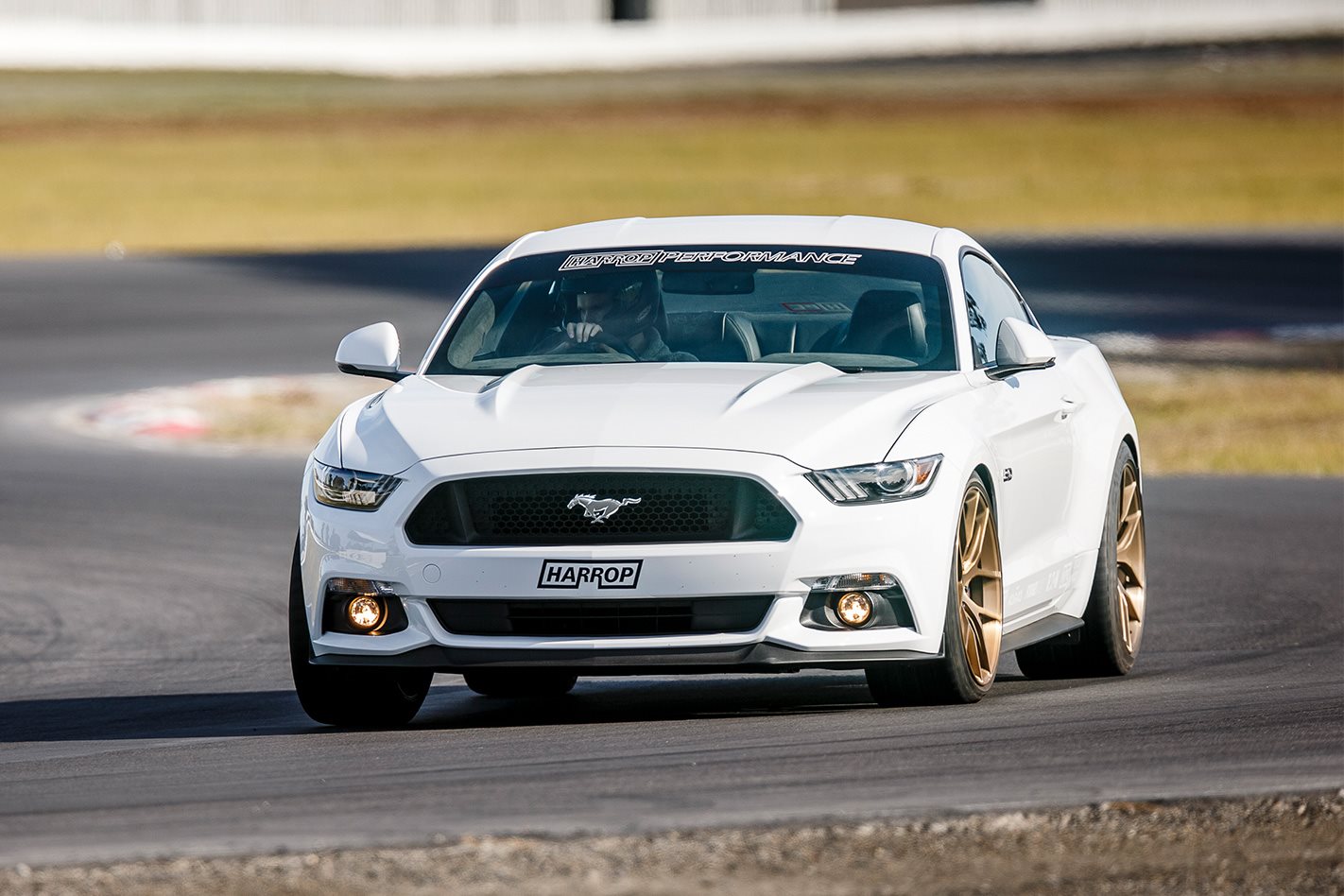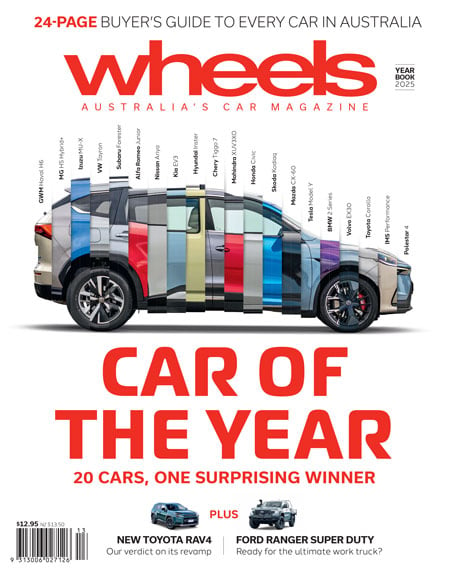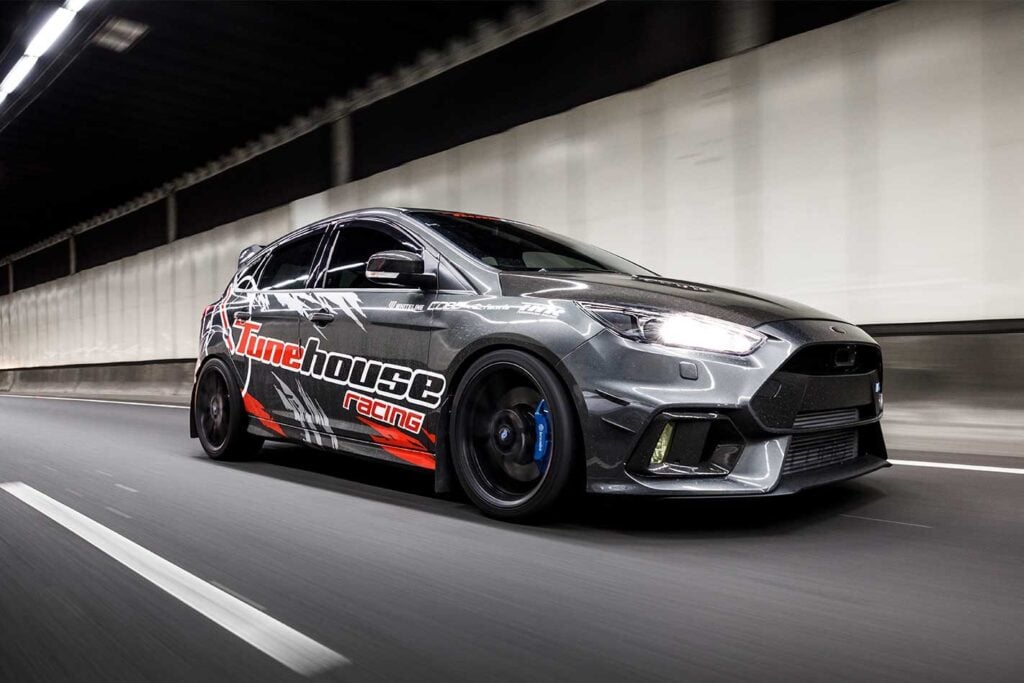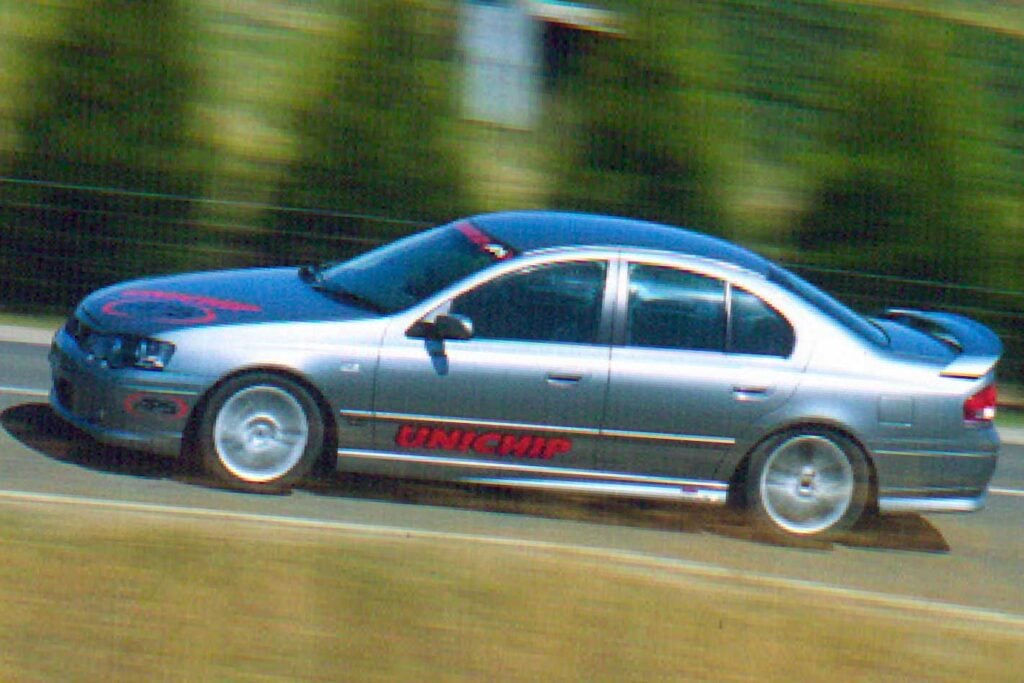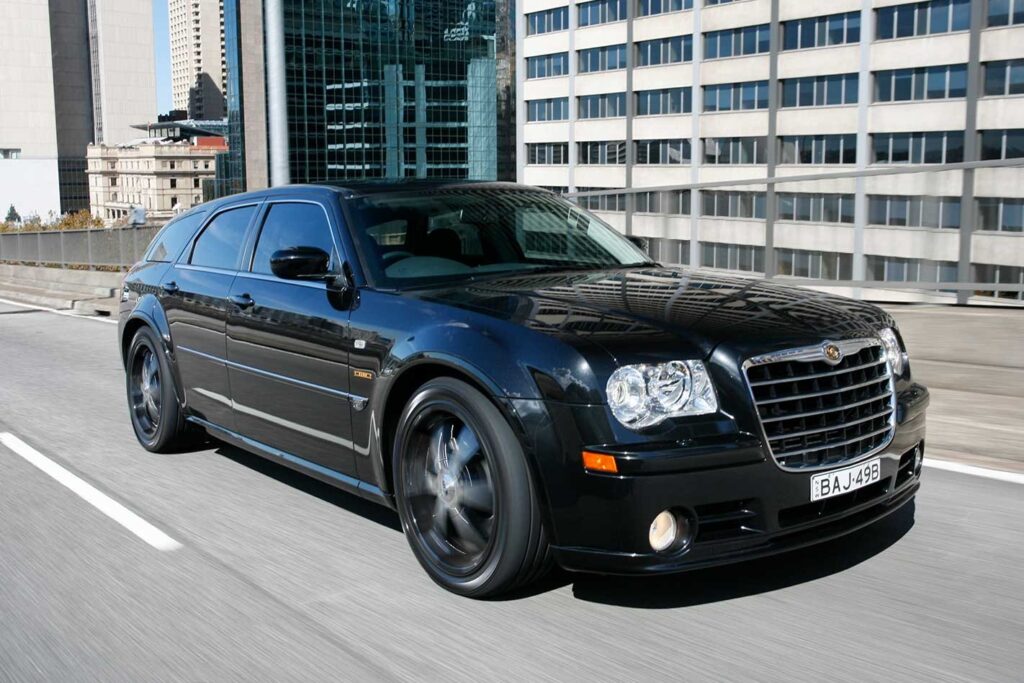“This car ran 10.5sec at about 145mph at Heathcote.”
It’s early and my foggy brain can’t quite comprehend what Harrop General Manager Heath Moore has just told me. I asked Moore to quickly run me through the basic specs of Harrop’s supercharged Mustang when he dropped that little factoid.
Okay, it was running E85 and drag tyres at the time, but trap speed is a pretty good indicator of ultimate horsepower and I’ve never driven anything this potent.
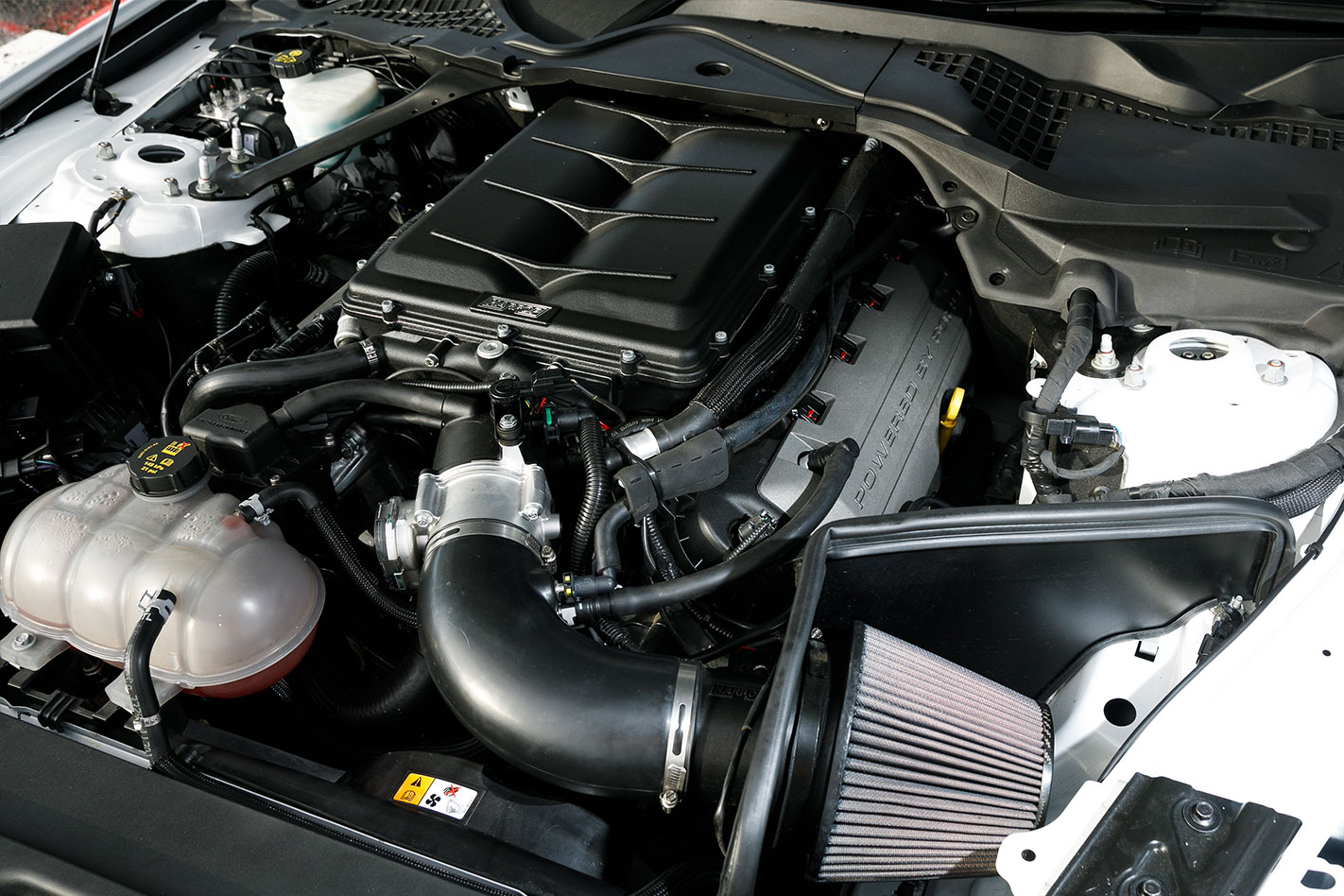
Comparatively, few customers are going to want to drop a further $50,000 on a $60,000 car, but those who do want the best.
We’ll cover what’s under the bonnet in a moment, but what sets Harrop’s blown machine apart are touches like the enormous Forgeline wheels (20 x 10-inch front; 20 x 11-inch rear), which at $10,700 are definitely at the top end of the market, and almost $10,000 worth of Alcantara interior (steering wheel, door trims, roof lining, centre arm rest and more) to give the Mustang more of a luxury feel inside.

The setup works brilliantly in this instance, eliminating most of the standard Mustang’s vices and creating a truly engaging driver’s car.
One of the most impressive aspects of the Harrop’s supercharged car – and one it shares with the similarly Shockworks-shod Mustang Motorsport machine – is the improvement in the front-end response.

The brakes were a little grumbly – according to Moore this car has seen plenty of track work – but refused to give up despite the demands of hauling down 1800kg of Mustang from super high speed time and time again.
For if there’s one thing Harrop’s supercharged Mustang is good at it’s building speed. The times themselves aren’t earth-shattering – though 0-100km/h in 4.46sec and a 12.08sec quarter mile certainly isn’t hanging about – but consider that these times were recorded by gently feeding in the throttle from rest in second gear and you get a feel for how much grunt this car has.
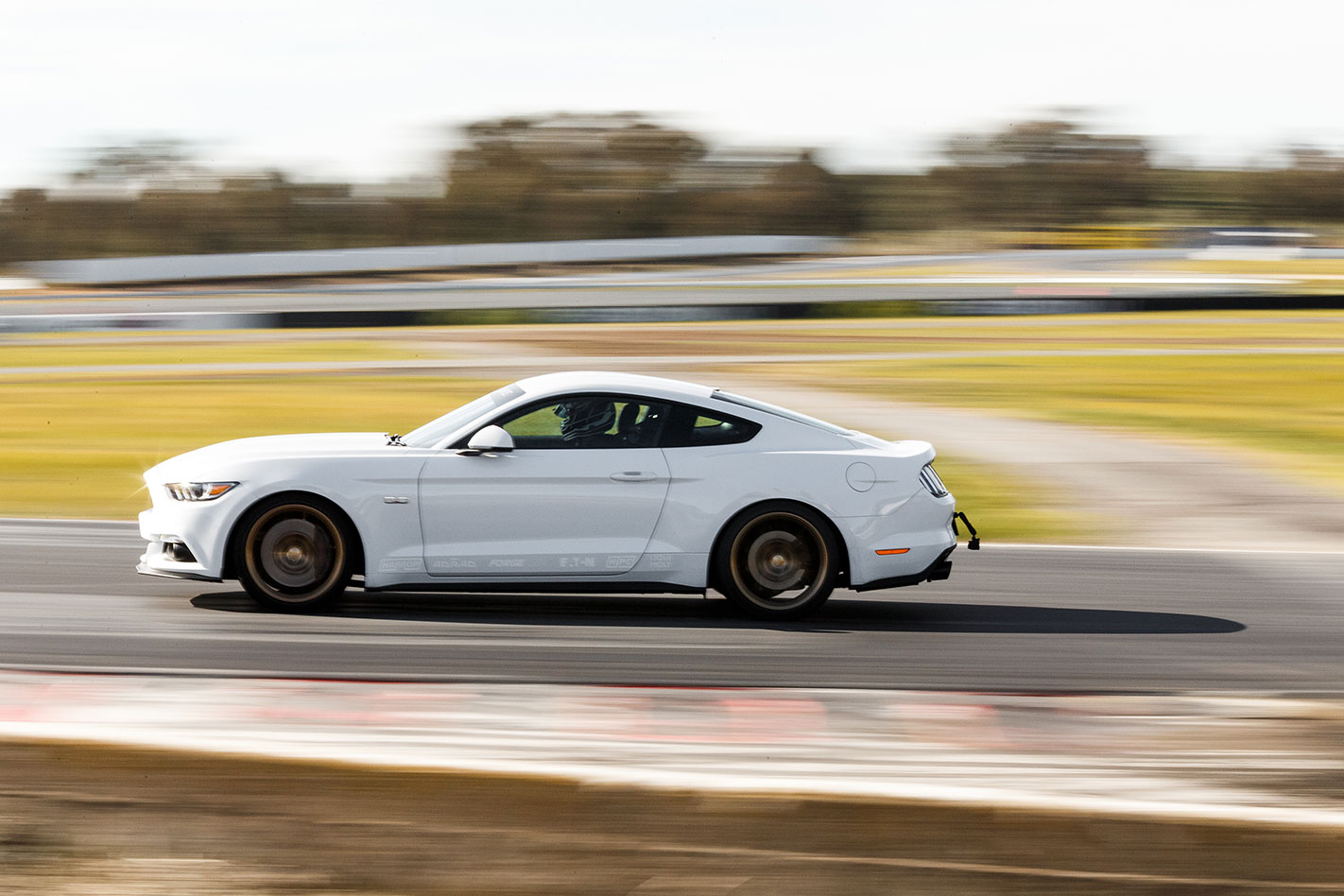
It’s remarkable how well the Mustang platform copes with an 80 per cent increase in horsepower, however, there’s room for improvement in the Harrop package in regards to throttle response. Harrop has boldly developed its own calibration for the Mustang in order to ensure it suits Australian conditions, something Moore admits has been a massive challenge due to the complexity of the latest generation Ford ECU.
As it stands there’s a significant delay between asking for a throttle percentage and the power arriving, akin to an old-school turbocharged car like a mid-1990s Subaru WRX.
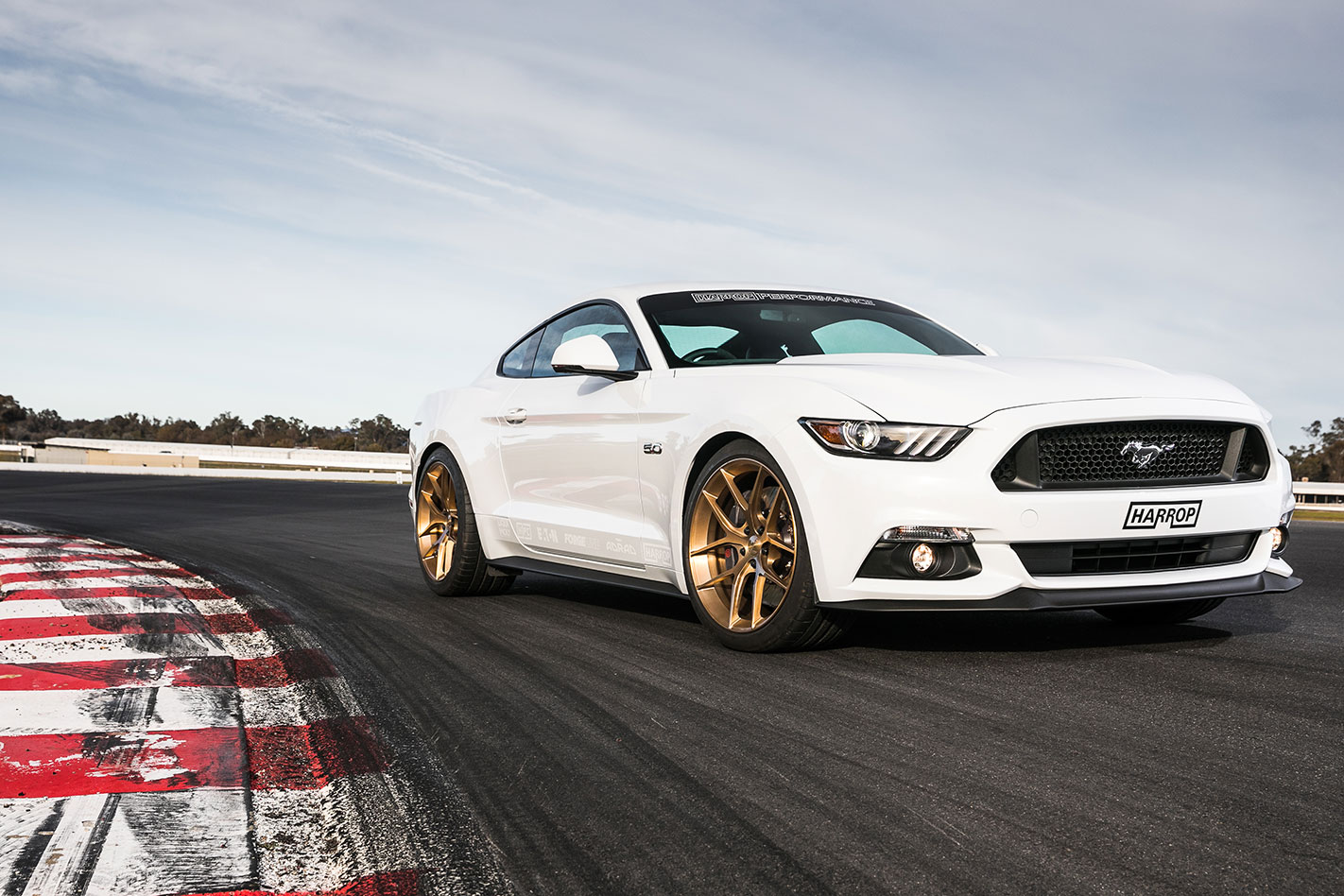
In Winton’s faster, third-gear corners it was less of an issue – apply the throttle just after turning in and the power would arrive in time for corner exit – but slower turns resulted in some fairly exciting moments as all 550kW arrived at once, at which point you’d back off and then have to wait for the power all over again.
Moore is adamant customer feedback has been very good and that the calibration is biased towards road use, but compared to the other supercharged cars present the Harrop was much more difficult to drive.
The calibration continues to be refined, however, as more data is gathered from customer cars and it’s possible that in the near future this no-compromise machine will be exactly that.
WARREN LUFF SAYS:
“With nearly 50 per cent more power over standard it’s so much fun on track.
“It’s also a car you’ve got to give a huge amount of respect to and you’ve got to be so smooth when you get on the throttle.
“Whilst the auto is great in terms of being able to deliver the performance numbers, it’s just one of the things that hampers it on circuit.
“Still, it’s a great all-round car and puts a big smile on your face.”

HARROP SUPERCHARGED MUSTANG GT SPECS
Power: 550kW Torque: 800Nm
0-100km/h: 4.46 seconds 0-400m: 12.08 seconds 80-120km/h: 1.9 seconds 100-0km/h: 37.29 metres Lap Time: 1:34.7sec Apex km/h: 82.59km/h Lap V-max: 205.25km/h 400m V-max: 205.43km/h
Engine: 4951cc V8, DOHC, 32v, supercharger Gearbox: 6-speed automatic Suspension: struts; anti-roll bar (f); multi-links, coil springs, anti-roll bar (r) Brakes: 380mm ventilated discs, 6-piston calipers (f); 330mm ventilated discs, single-piston calipers (r) Wheels: 20 x 10.0-inch (f); 20 x 11.0-inch (r) Tyres: 275/35 ZR20 (f); 295/30 ZR20 (r); Michelin Pilot Super Sport
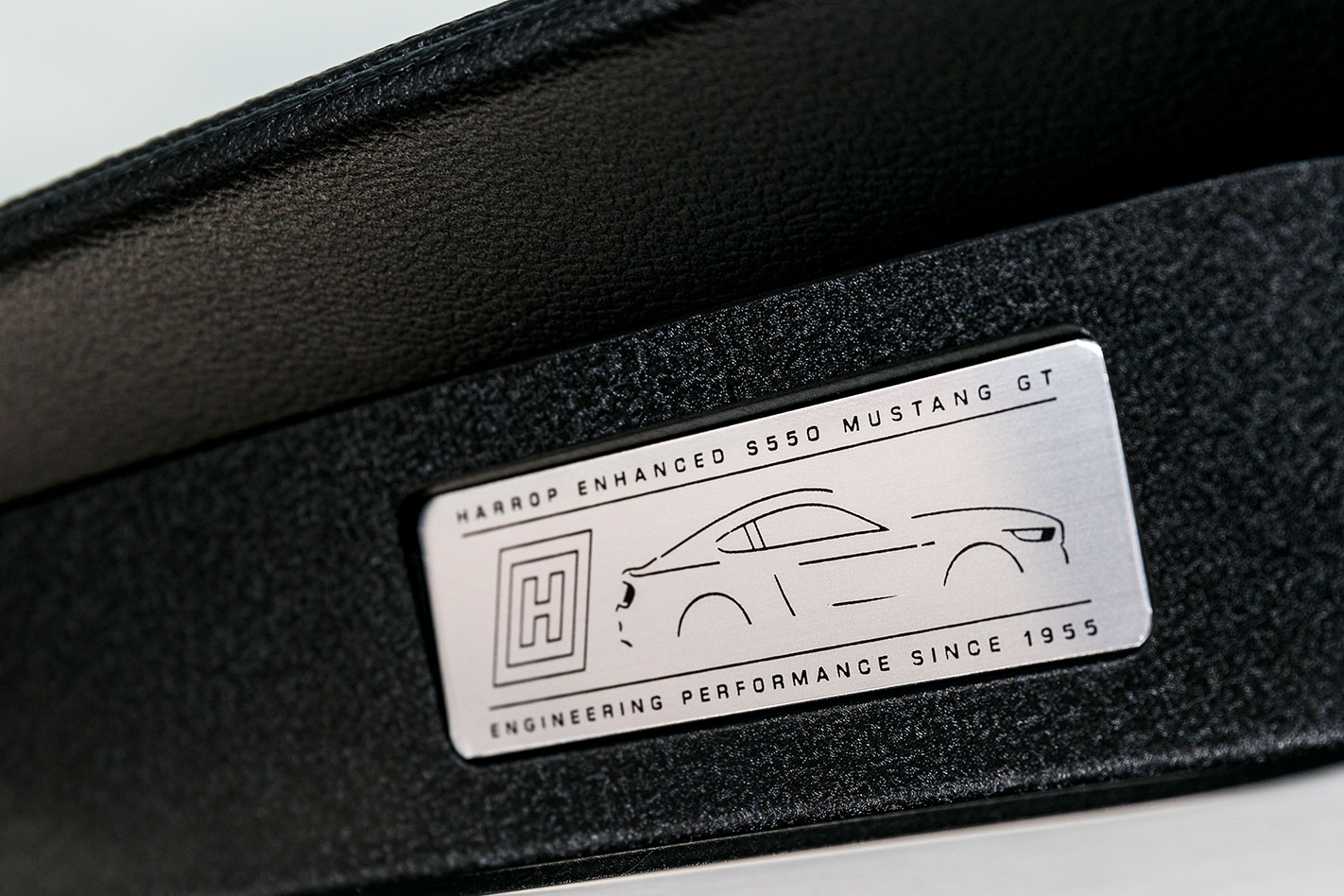
PARTS AND PRICES
Stage 3 Package: $19,280 Suspension: $3400 Differential: $3069 Brakes: $4098 Wheels/Tyres: $13,100 Total Mods Cost: $52,076 Vehicle Cost: $59,990 Total Cost: $112,066


